Dr. Randall Hughes FSU Coastal & Marine Lab

 David and I are in Sydney, Australia, on visiting research appointments with the University of Technology Sydney. We arrived the first of the year, and after recovering from jet lag and getting our bearings, we embarked this week on setting up a couple of new experiments. We have great local “guides” – Dr. Peter Macreadie (UTS), Dr. Paul York (UTS), Dr. Paul Gribben (UTS), and Dr. Melanie Bishop (Macquarie University) – to introduce us to the field systems and collaborate with us on these projects.
David and I are in Sydney, Australia, on visiting research appointments with the University of Technology Sydney. We arrived the first of the year, and after recovering from jet lag and getting our bearings, we embarked this week on setting up a couple of new experiments. We have great local “guides” – Dr. Peter Macreadie (UTS), Dr. Paul York (UTS), Dr. Paul Gribben (UTS), and Dr. Melanie Bishop (Macquarie University) – to introduce us to the field systems and collaborate with us on these projects.
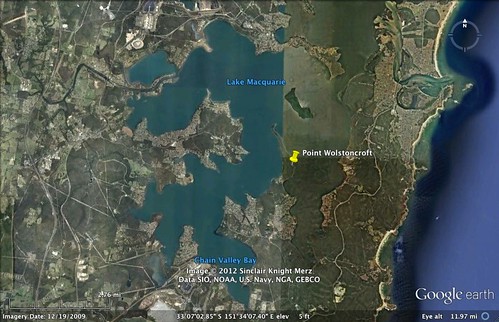
Our seagrass and razor clam experiment is set up at Point Wolstoncroft in Lake Macquarie (north of Sydney).
The importance of local knowledge was highlighted last week as we snorkeled in the seagrass beds of Lake Macquarie (a large coastal salt lake) with Pete and several members of his lab.
Pete was busy sampling an existing experiment while David and I scouted around. Thankfully his head happened to be above water when I said to David, “Come check out this little octopus I found!”. Lo and behold, it was a blue-ringed octopus (genus Hapalochlaena), arguably the most venomous (yet luckily very docile) marine organism in the world.
I quickly stopped prodding at it with the clam shell I’d found for that purpose and decided that next time I better inquire of the particular dangers of a site before getting in the water! (And thus got the image above from borneodream.com, rather than my own camera…)
Dangers aside, the research sites we’re working in are very pretty,
as well as interesting ecologically. We’re going to focus on the “foundation species” in these systems – the ones that create habitat for lots of invertebrates and fishes that wouldn’t otherwise be there. Our foundation species of interest are:
1. Seagrass (Zostera capricorni) and razor clams (aka, razor fish; Pinna bicolor) in Lake Macquarie.
2. Oysters (Saccostrea glomerata) and algae (Hormosira banksii) living around the mangrove pneumatophores in Towra Point Nature Reserve, Botany Bay.
You may have noticed that some of these plants and animals are familiar to the blog (though different species) – in fact, there are analogues for all but the algae in our field sites in FL. So we are looking forward not only to starting new experiments here, but also to beginning companion experiments when we get back to examine the similarities and differences between the different environments.

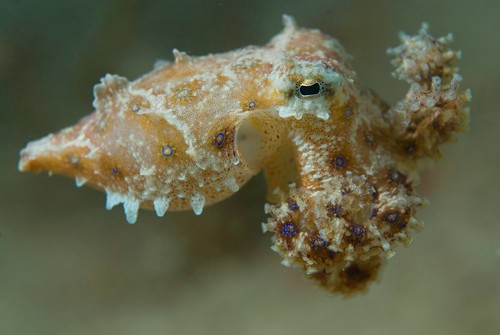
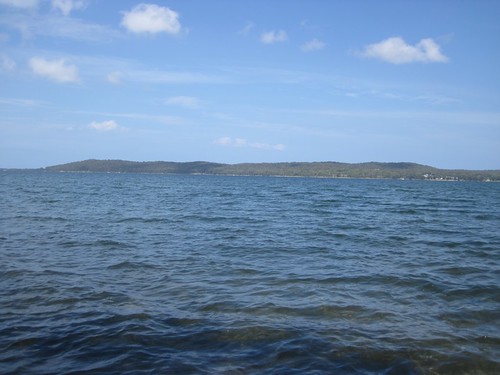
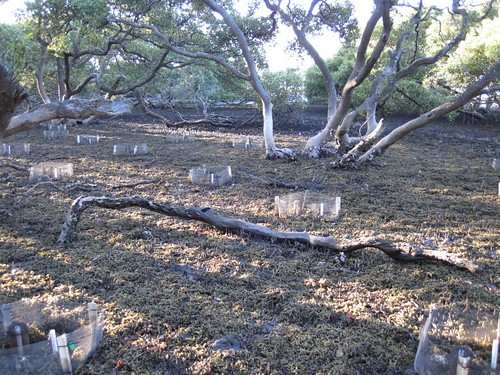
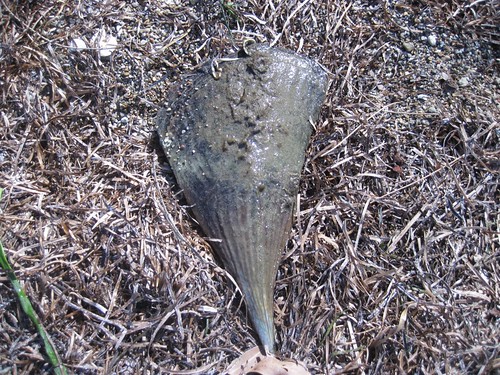
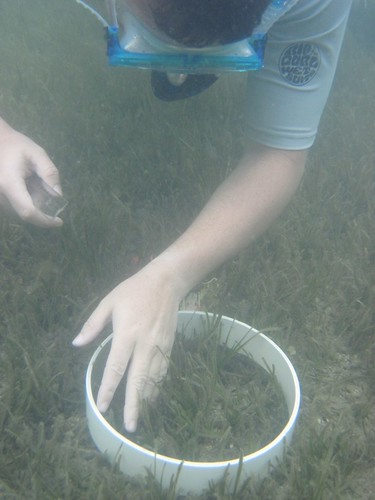
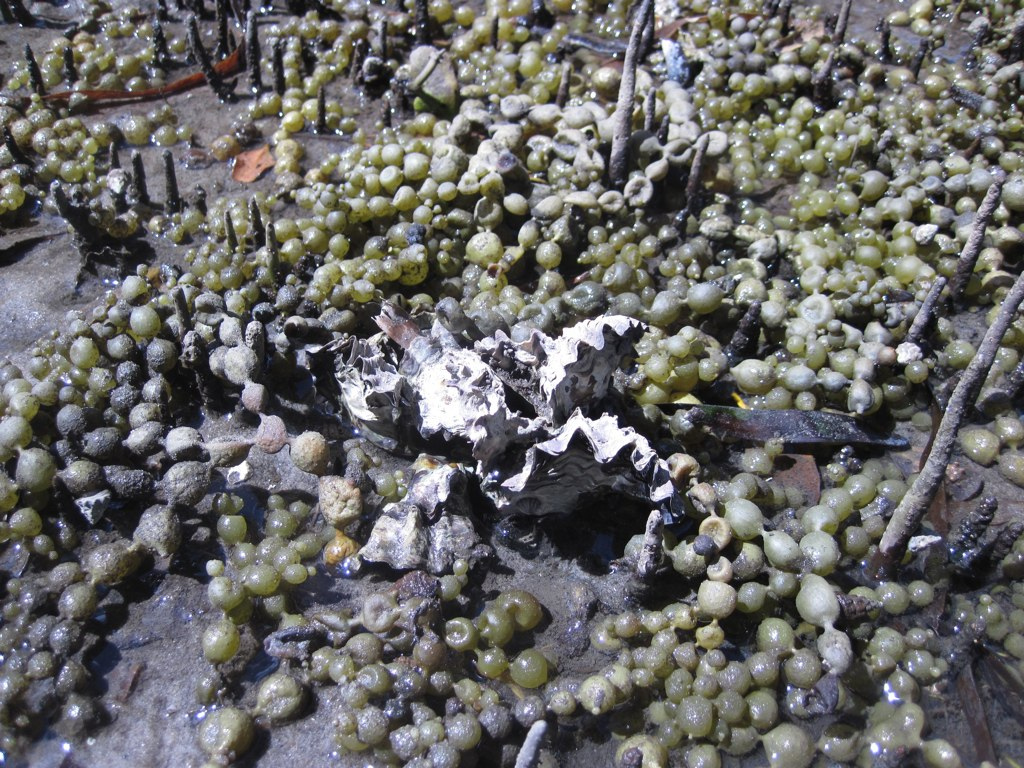
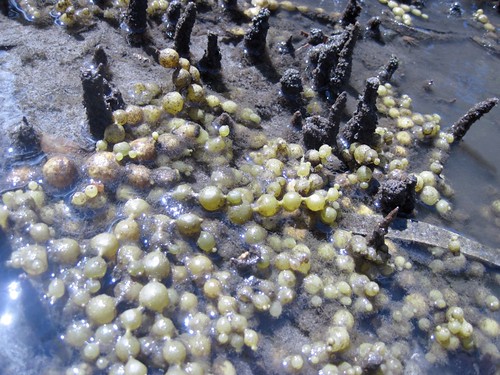

5 comments
Good luck during your time in Australia! I am interested in the seagrass/pen shell stuff you guys may end up doing. Are there high densities of Pinna there? Are they commercially important? Its a species I am interested in. I just returned from a 2.5 week stint in Jamaica and they were all over the lagoon.
Randall and David: G’day! I just put an elbow on my keyboard so you may have received most of this. Watch out for those “nasties” of which Oz has a great many. Critters and plants bite, sting and smear dangerous or irritating chemicals. It sounds as if you’re finding and being shown some neat systems. Local knowledge helps and really increases efficiency. Linda and I have talked recently about North Queensland (almost a separate state and deserving of upper case letters) and envy you. Our experience in Sydney and NSW is limited to the airport and quick flyovers. Cheers, Andy
Thanks, Andy! We have certainly relied on the local knowledge of our collaborators to introduce us to these new systems. We leave this week for a brief tour of seagrass systems in Port Phillip Bay, Victoria, which I’m excited to see!
Hi John! We found high densities of Pinna at some sites, but not others. They aren’t a big fishery here – in fact, they are considered a nuisance in Lake Macquarie and there is some talk of removal programs. (Swimmers often cut their feet on them when walking around in the seagrass beds.) One goal of our experiment is to understand better what role they play in the community.
[…] I mentioned in my last post, I’ve spent the last 6 weeks or so on a research trip to Australia. Most of my time was spent […]
Comments are closed.